In a trip that covered Shymkent, Turkistan, Tashkent, Samarkand, and Bukhara, it was the last one that managed to etch something that is impossible to erase in my mind. The beauty of Bukhara is difficult to explain, no matter the medium. If I were to return to any of these cities, and I really hope that I can, it would be Bukhara, hands down, followed far apart by Samarkand.
There is no right way of doing this in my opinion, but since there are already a ridiculous number of proper guides for Bukhara out there, and even more lists of things to do, I will do something different. We will simply embark on a journey together, down on my own memory lane, as we explore the treasures that Bukhara holds through the photos of the place that I took, in a chronological order no less. Let us begin!
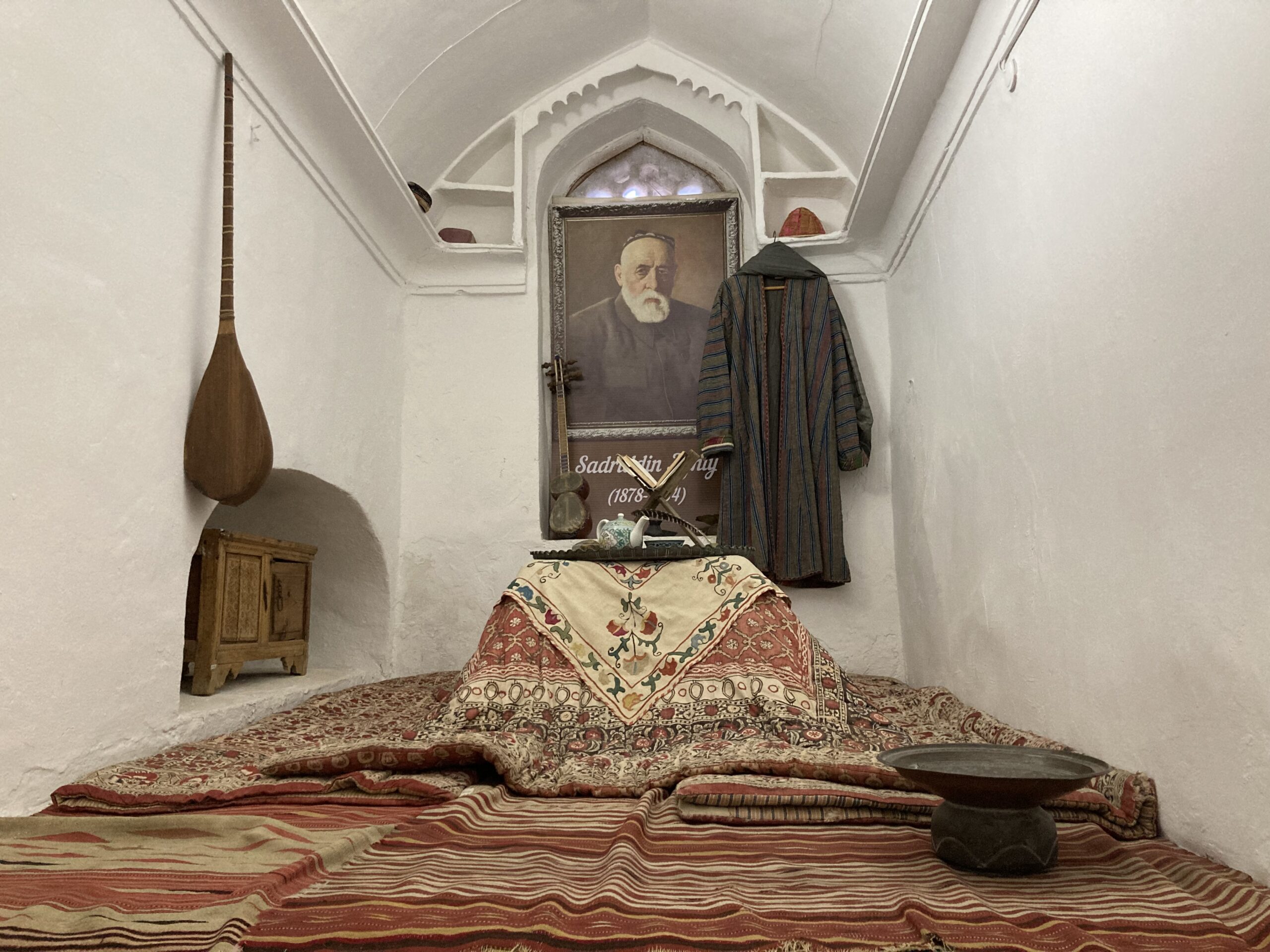
Once a home to famous Islamic scholars like Ahmed Yasawi who came there to study the Quran and more, Bukhara is a religious jewel in the middle of the desert, an oasis in more ways than just one. In one corner of the Kukaldosh Madrasa, close to Labi Hovuz, one can find a small museum dedicated to such scholars who visited Bukhara to study at one point. You can find recreations of their living quarters like this, and some other small exhibitions.
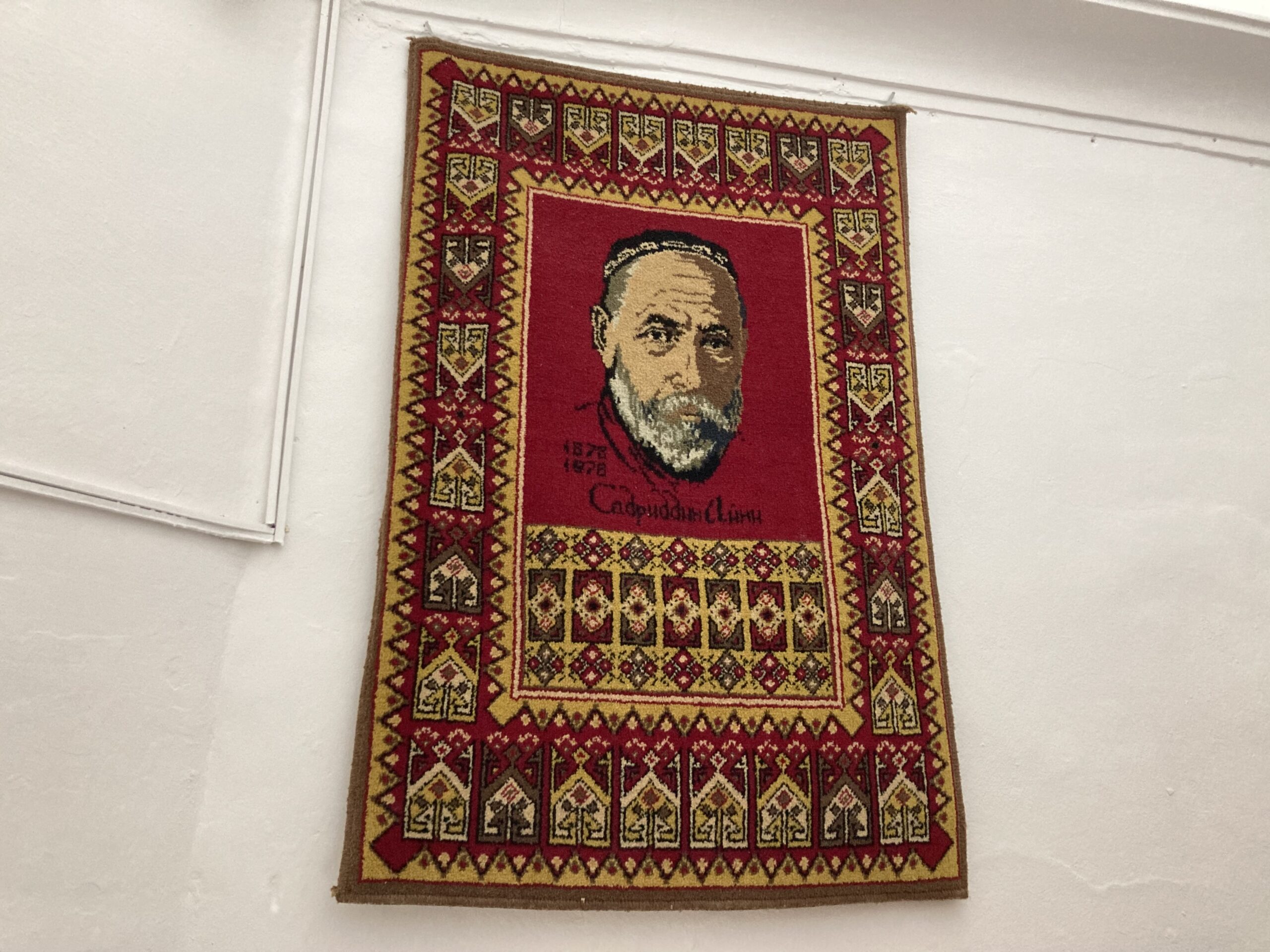
When I arrived in Uzbekistan, I knew that I was going to see a lot of mosaics, and a ton of carpets. I sure was not disappointed. In the same museum, you can find some small carpets like this one, where certain Islamic scholars’ faces are depicted on it. Certainly an interesting take on portraits if you ask me.
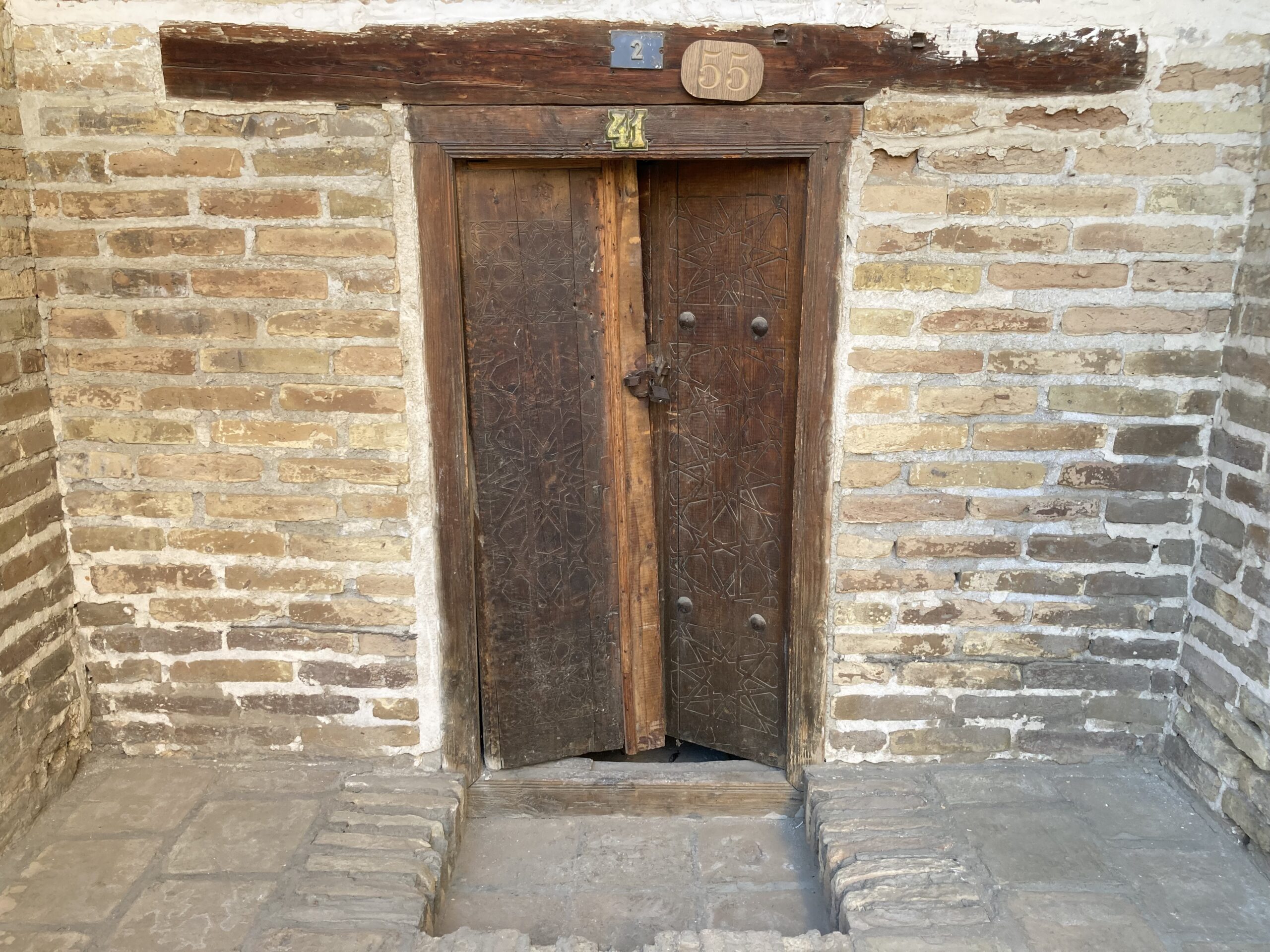
What I did not expect was perhaps just how much I would be moved by the doors I found in Bukhara. I mean, these are really something else. Almost half of them seemed to be hand made, and thus they were all pretty unique. After feeling a bit pity for postmen of Bukhara, seeing that there were three numbers given to a single door, I moved on, amazed, but ready to explore more of this already wonderful city.
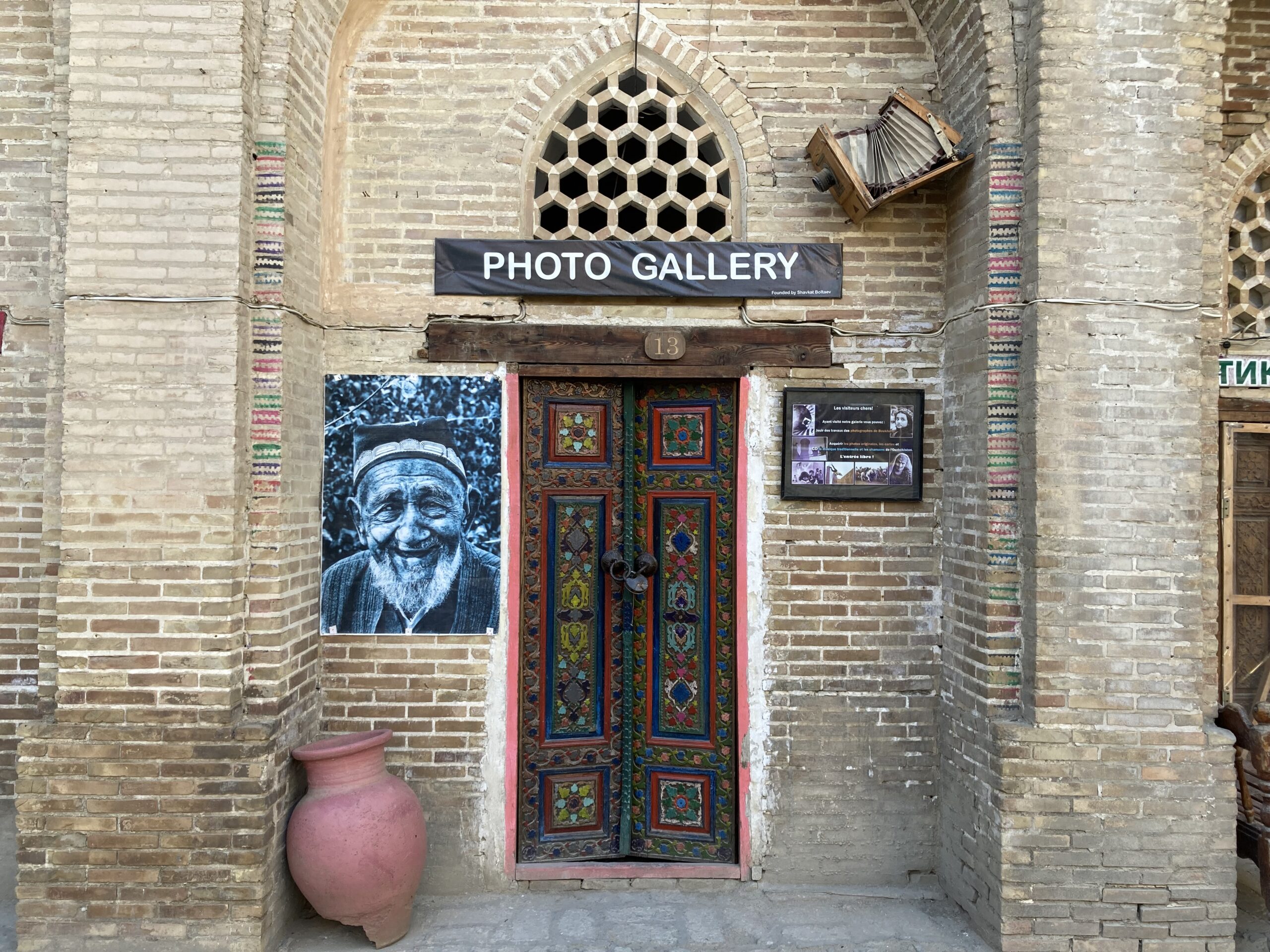
One of the things on my mind was to visit a small but free photo gallery in town, which many described as being superb. When I was there in the morning, it was not yet open. Disheartened, fearing that it may not open at all during my short stay there, I took a photo of the entrance and left the place. Read on to find out if I could get in there eventually, or not!
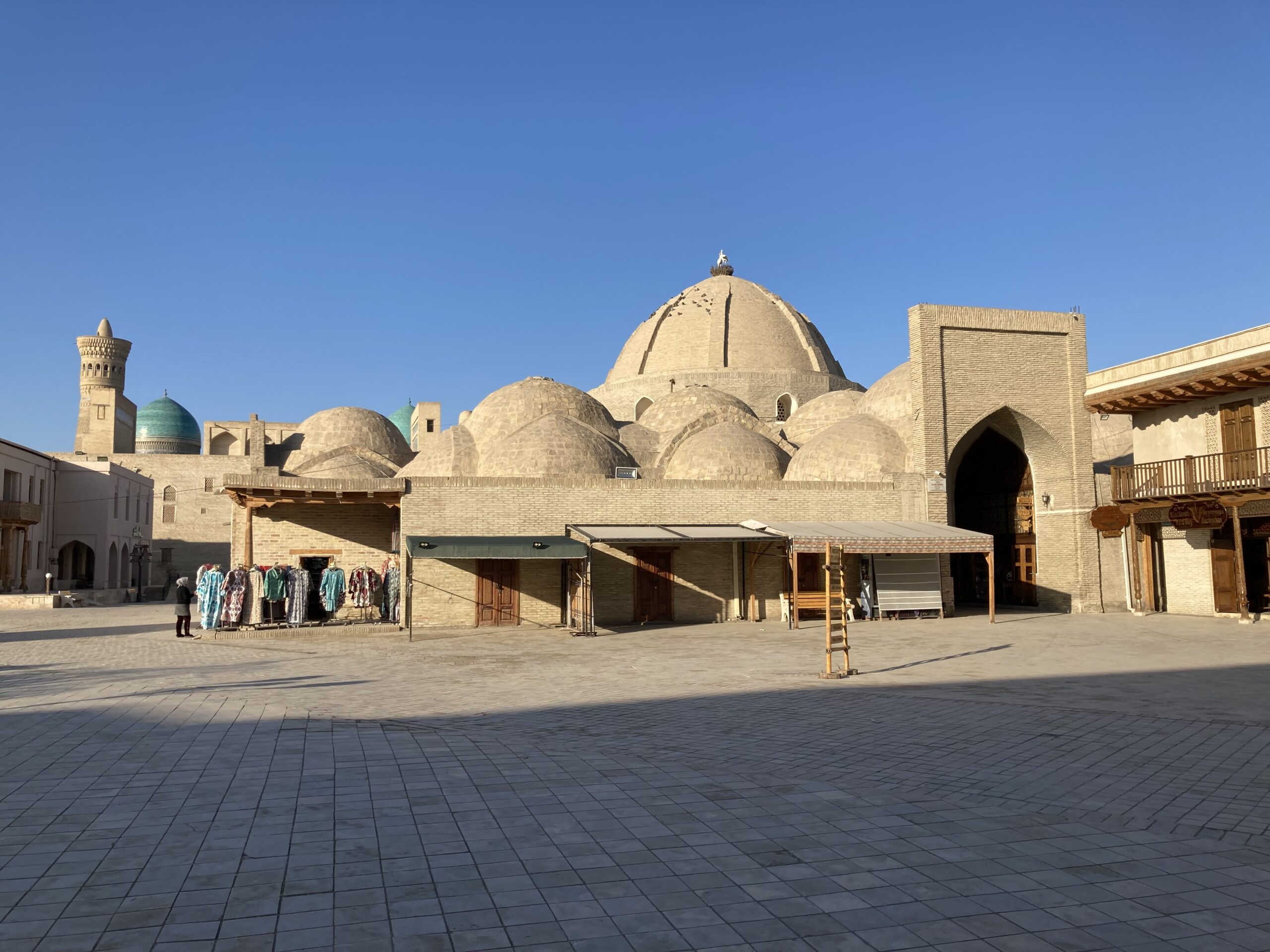
I then slowly made my way to some of the true highlights of the city, which seemed to be separated by this small bazaar of sorts. It was filled with a few giftshops and artisanal spaces, all of which seemed not only pretty cool, but also surprisingly cheap. Despite being an extremely touristic place, with even some (mostly Uzbek) tourist groups touring the city in the middle of December, I expected prices that would upset one, but this is not the case so make sure to buy whatever you like here and help out the local economy!
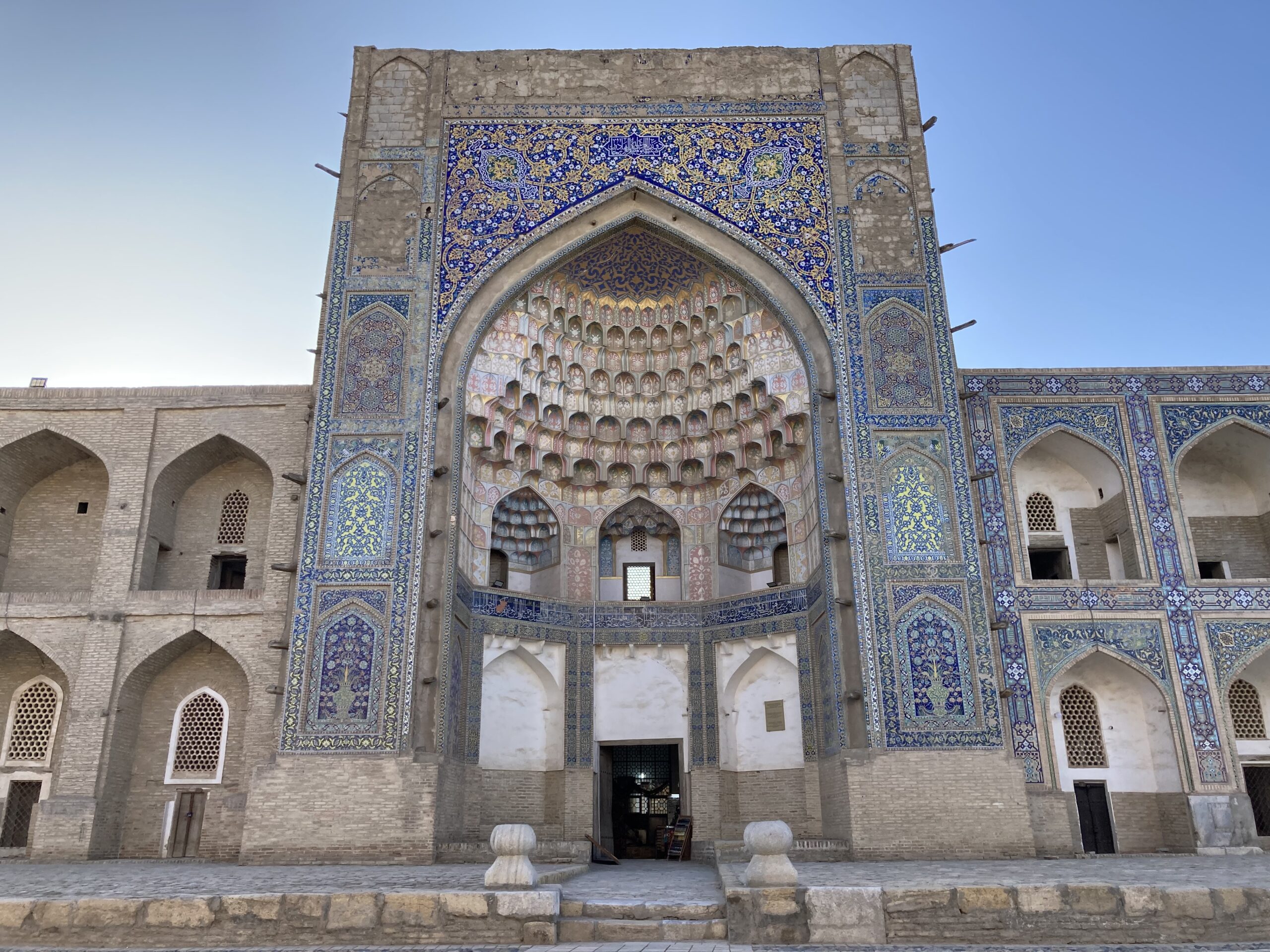
If you just turn back after taking the previous photo, you will see two madrasas, one dedicated to Ulug Bek on the left, and another that bears the name of Abdulaziz Khan on your right. This is the latter one, arguably the prettier one too.
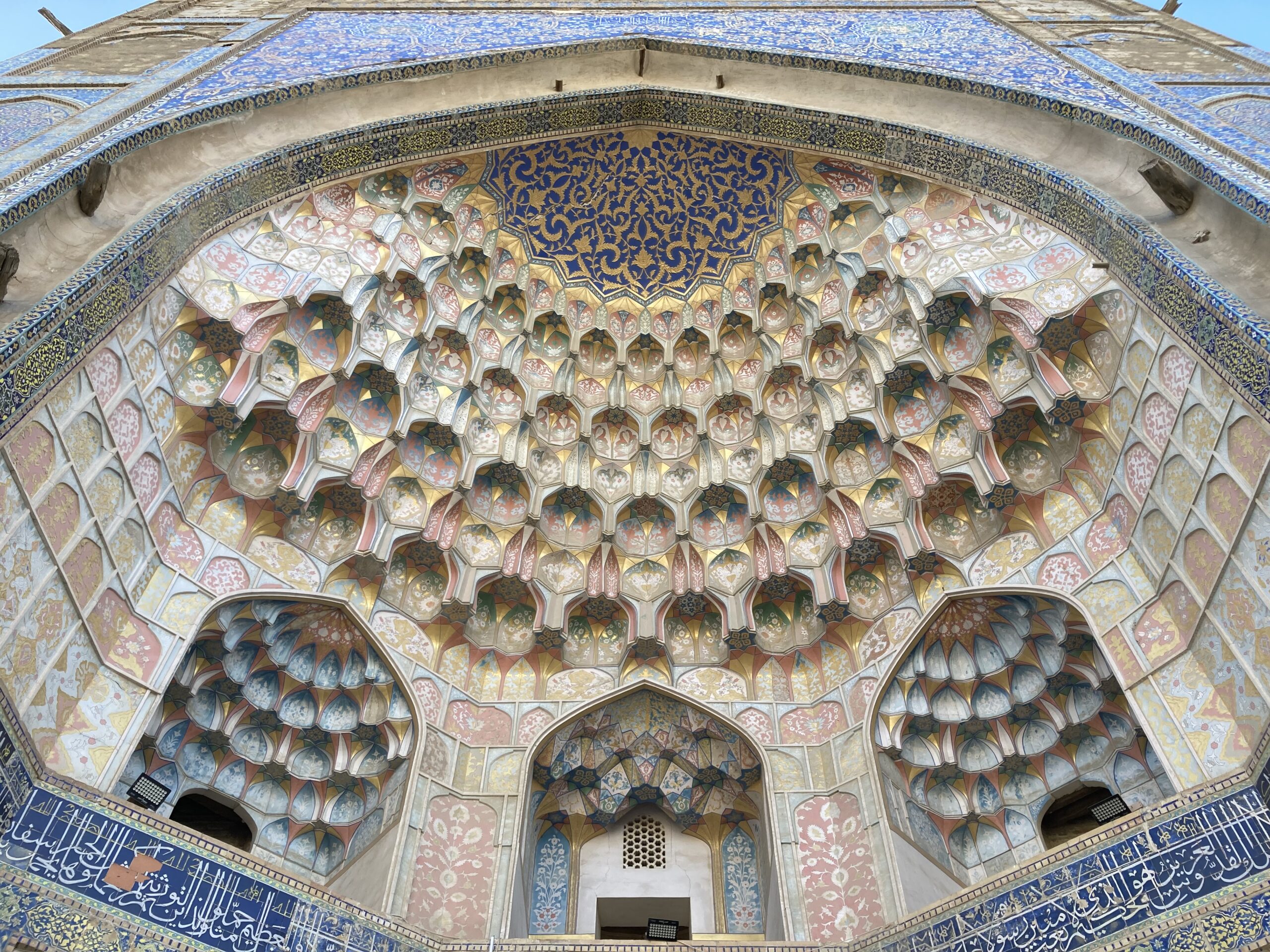
I mean just look at it. Look at all those details! It is amazing. It is hard to imagine how much work must have gone into them.
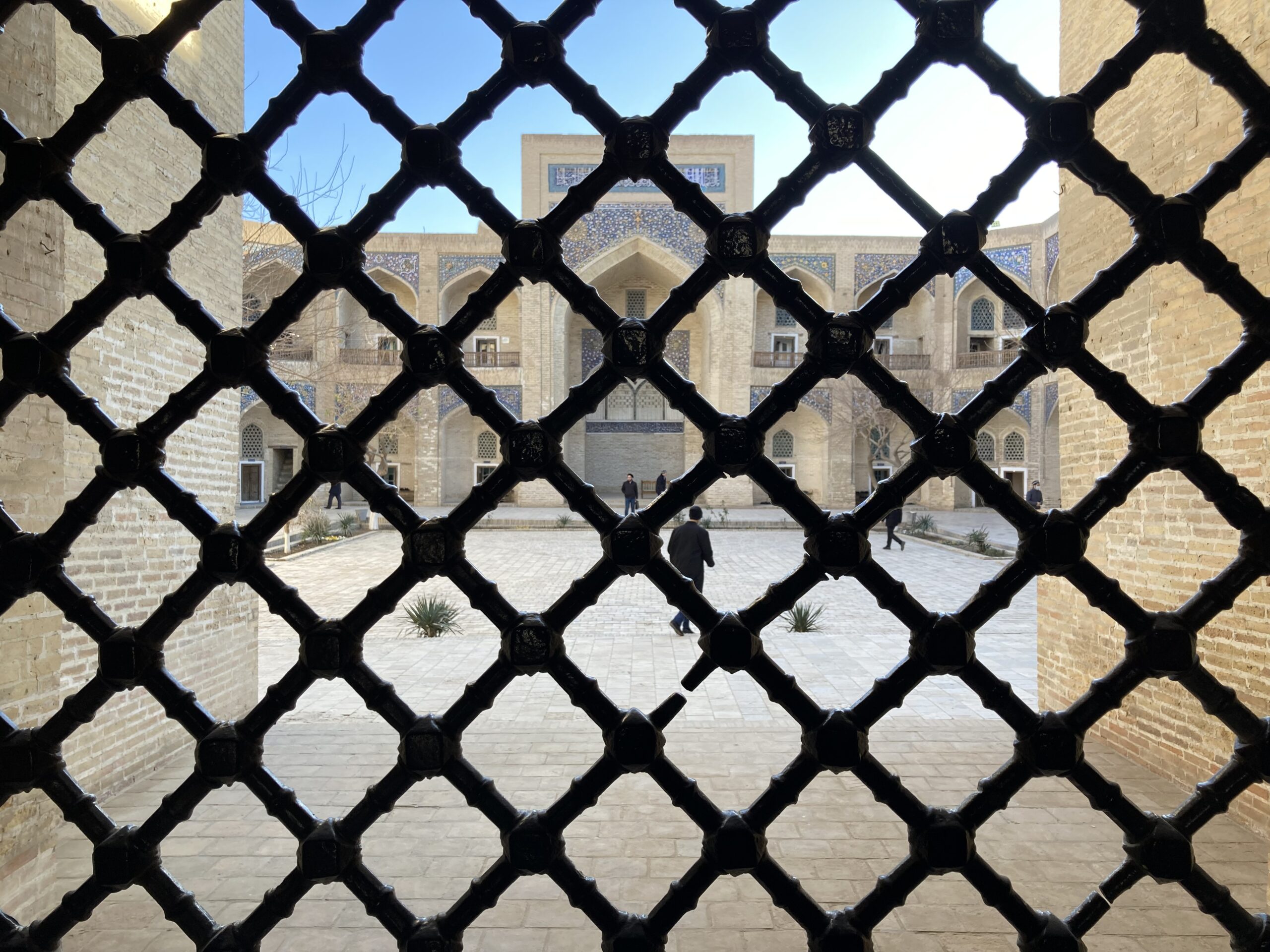
Pretty shocked with just how good everything was going so far, and how happy locals seemed to be, I made my way to see Mir-i Arab Madrasa. I had no idea, literally none, that I would find some actual madrasas in Uzbekistan, as in, ones that work today. I mean, do not judge me too harshly, this time I actually did not have the time to get ready for this trip of mine ‘intellectually,’ given just how busy I was with the first semester of doctoral studies back in Astana. Anyways, they were there, pupils studying Quran I mean, right in front of my eyes. Of course, I was told not to bother them if I can help it, so us pesky travellers were reserved to watch them through these bars. You could still hear people reading Quran out loud all the way from here, and I did run into some of these students leaving the premises using a semi-hidden exit later on, and they seemed surprised to see me peeping around.
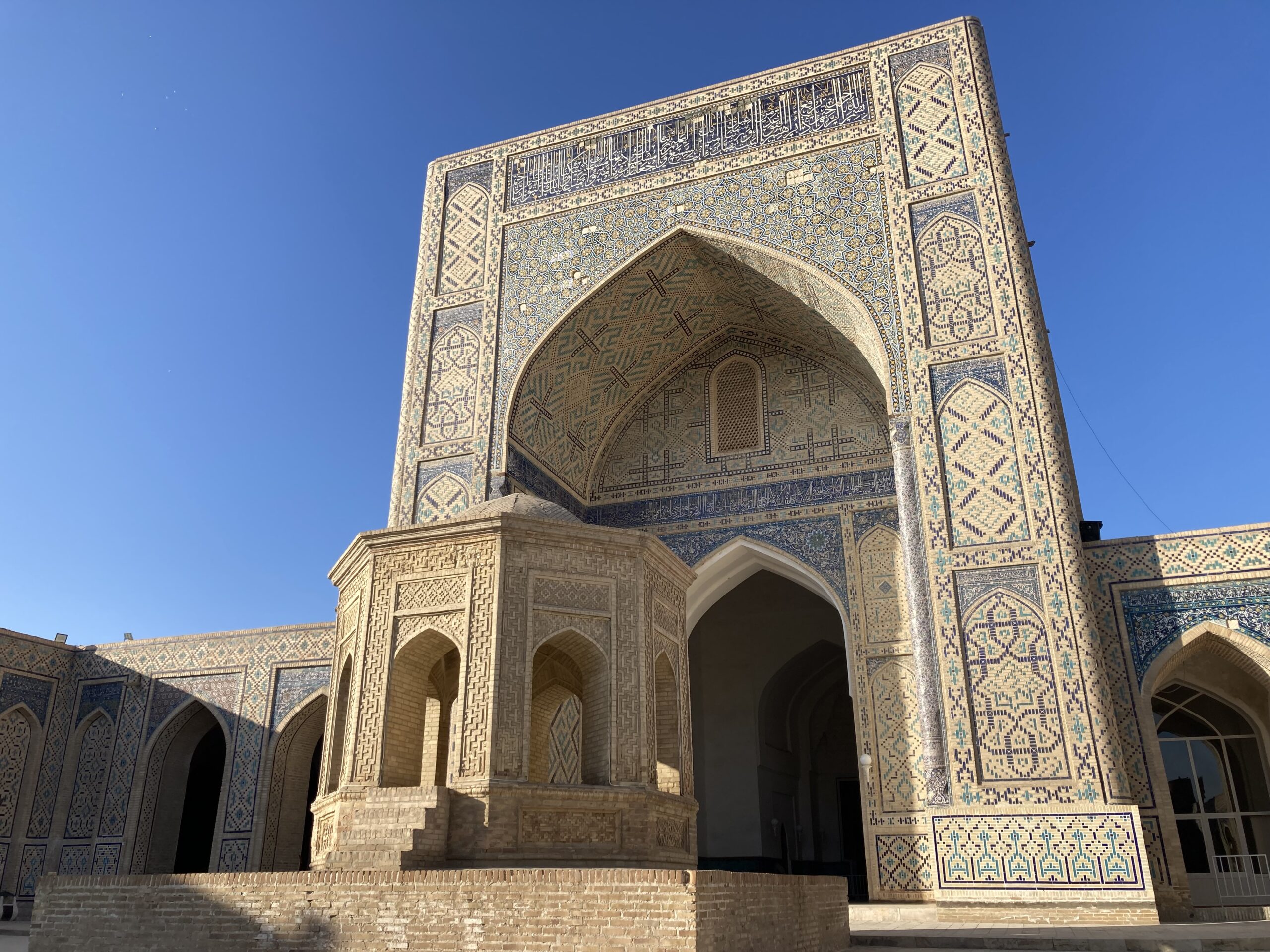
Just across the madrasa, you can find a mosque, which is, I guess, a no brainer for many reasons. This is the Kalan Mosque, a 16th century mosque with apparently 288 domes. I was offered a tour of the premises by a guide, not for free of course, but I simply could not afford the time for it. After a short few minutes of looking around I had to go back to move on with my own tour of the city.
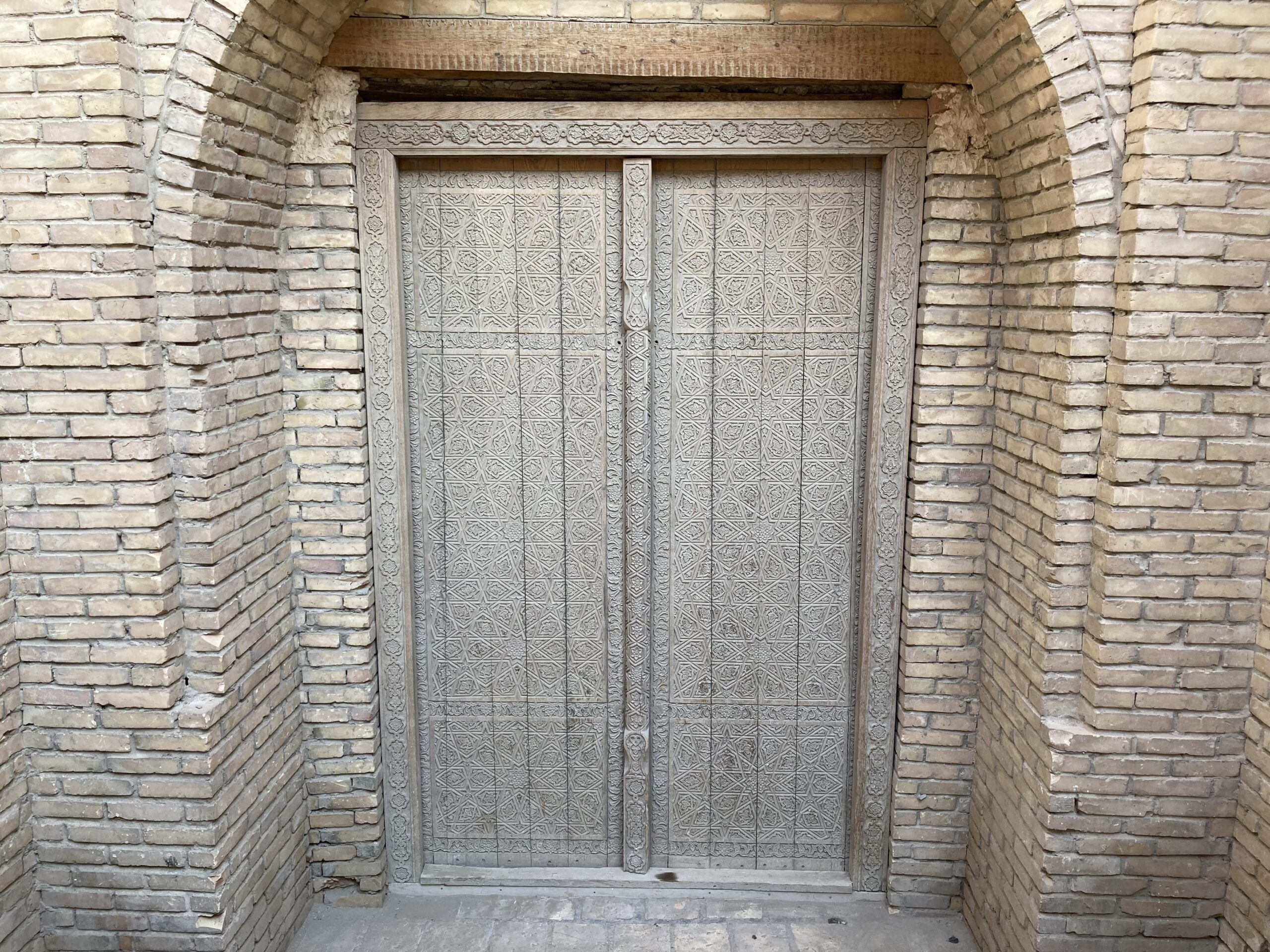
On the way, I was blown away by yet another excellent door I haphazardly ran into. I am just speechless at this moment, I mean the way they carve the wood here is so good and makes me hate the soulless metal doors we have even more than usual.
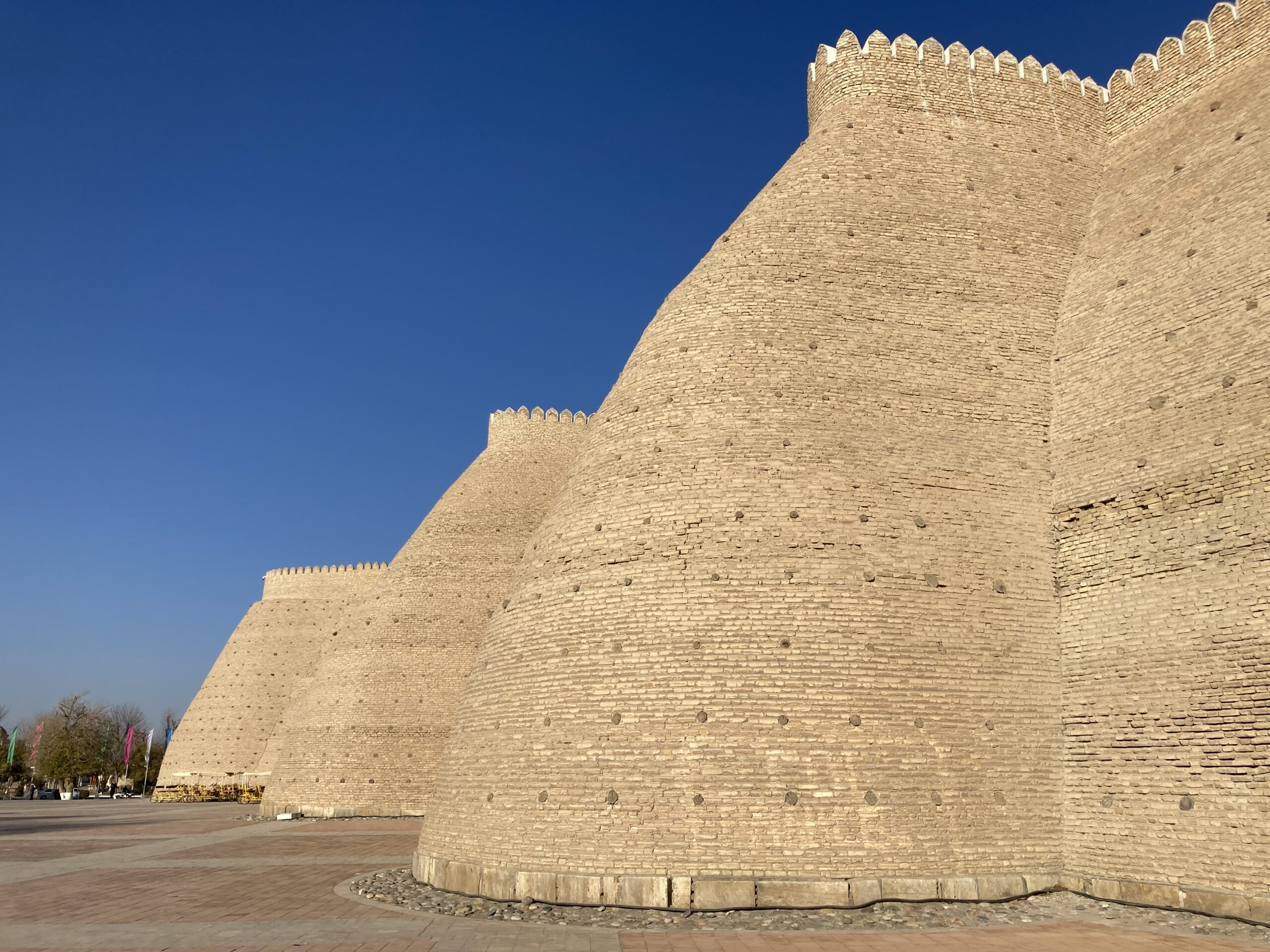
Sad about my own door back in Astana, but happy with the way the day is going, I finally made it to these beautiful stone walls, also known as the Ark of Bukhara. I would go in, soon enough, but I had something else in mind first.
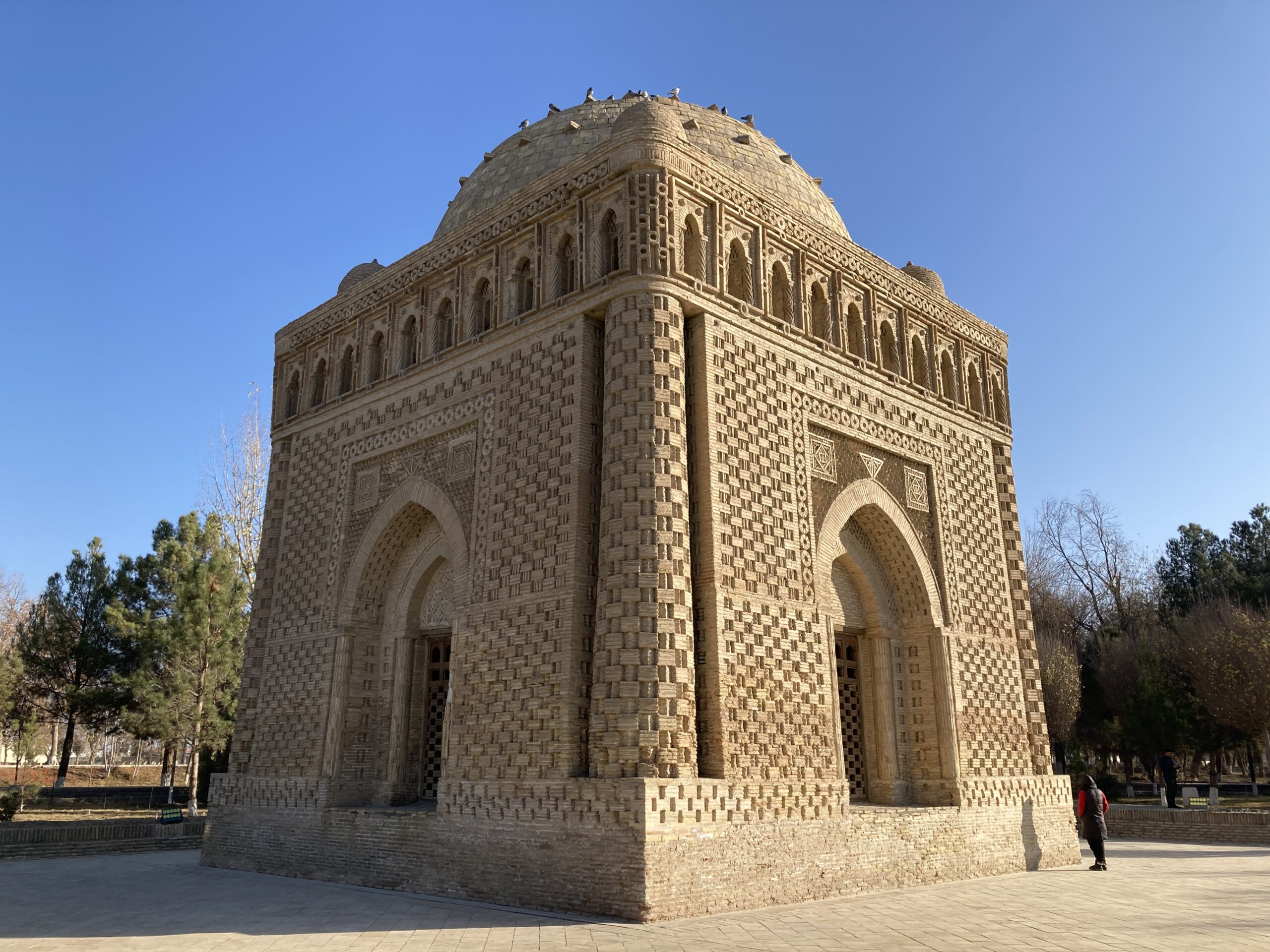
I wanted to visit the Ismail Samani Mausoleum first, an excellent 10th century structure that just might be one of the oldest buildings in Bukhara. And that is exactly what makes Bukhara so special as well. You will find architectural masterpieces from seemingly all periods of Islamic architecture, from the earliest ones to the 19th century structures that were finished when the city was already under the suzerainty of the Russian Tsardom.
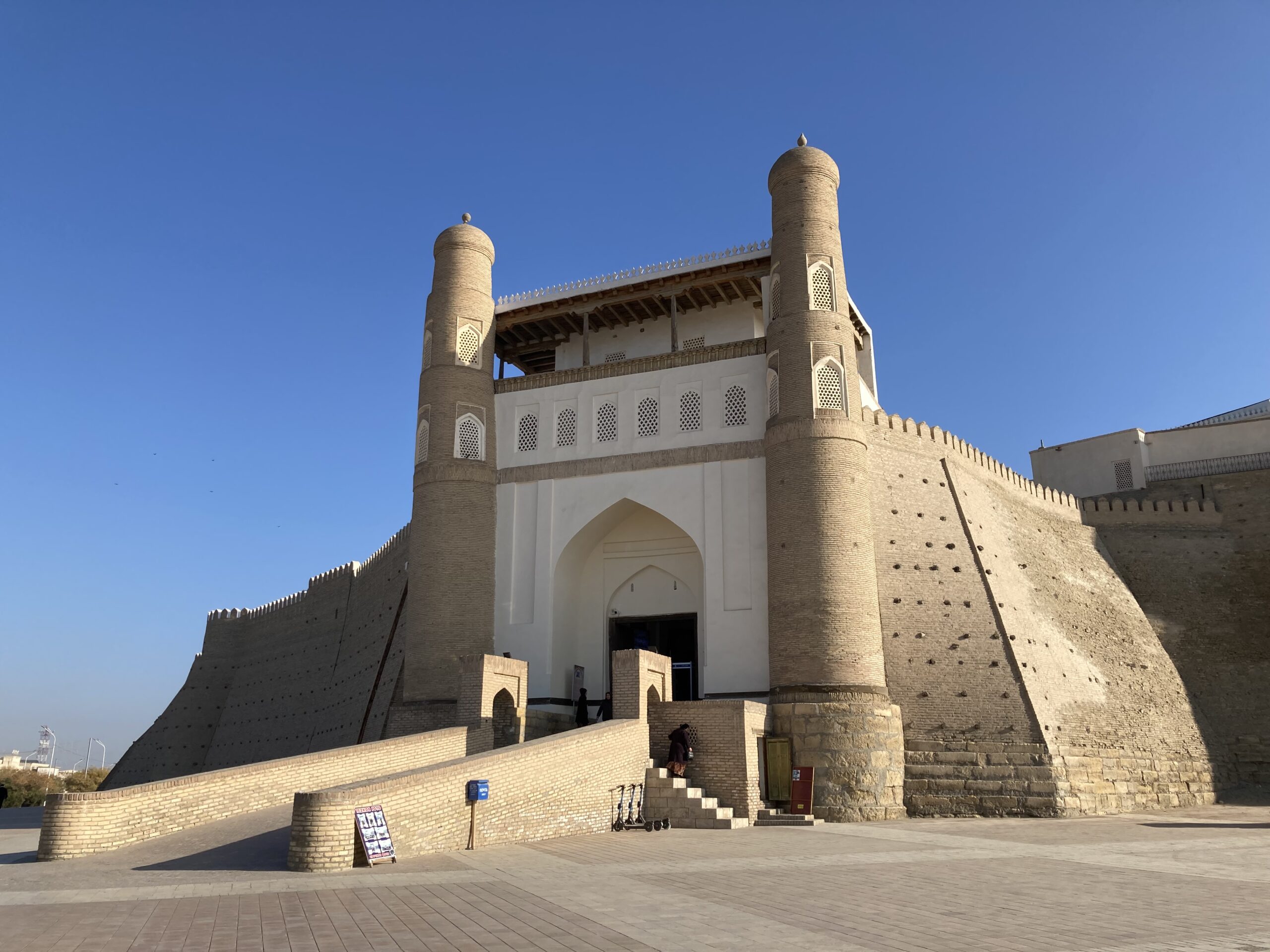
Satisfied, I came back to the Ark of Bukhara, and entered it through this lovely portal of sorts. In hindsight, it all looked a bit too clean for my taste, and that must be because of how it was renovated. Nevertheless, some work seemed to be ongoing so perhaps in due time it will look a bit more, for the lack of a better word, old.
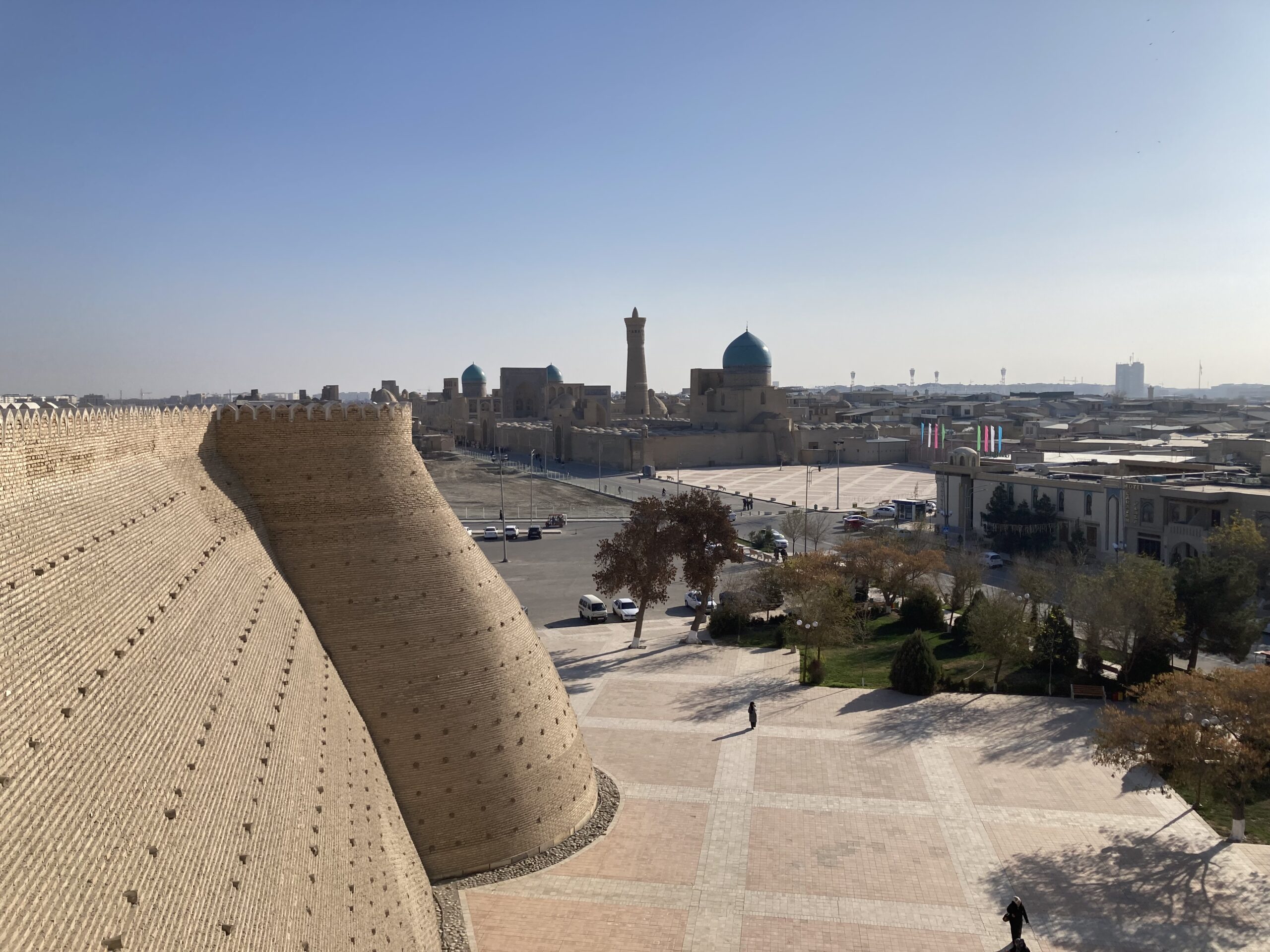
There are a bunch of museums inside the premises of the Ark, some dedicated to the artisanal work in the region, others to its history. I enjoyed them, but what I enjoyed the most was this view of the city from atop. I mean, as atop as it can get here, which is a good thing, it would really destroy the whole atmosphere if some dumb skyscrapers were protruding from the ground randomly, as they do in some modern cities. In fact, the whole old city is so beautifully designed that more often than not a lot of these landmarks surprise you by appearing just ahead of you, as even the shortest walls can mean that you cannot see many signs of them beforehand, spoiling the experience.
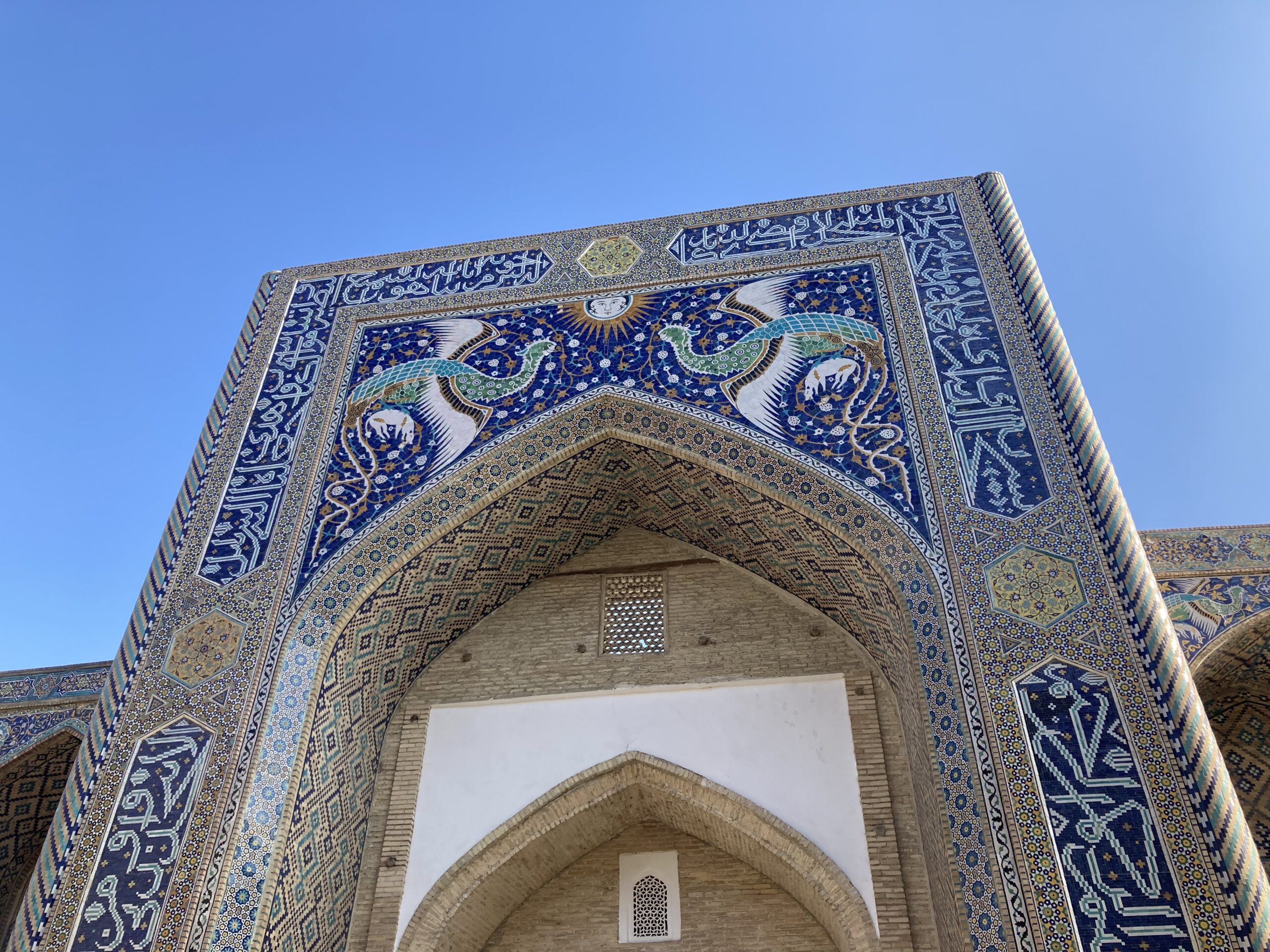
In any case, by this point I was pretty hungry, so I made my way back to Labi Hovuz to have a mediocre lunch, which was made memorable thanks to the nice weather in the middle of December, as well as these excellent structures that circled the area I was sitting in. This one is called the Nodir Devonbegi Madrasah, and it had a ton of small workshops inside, selling anything from coloured glass to ornate lambs.
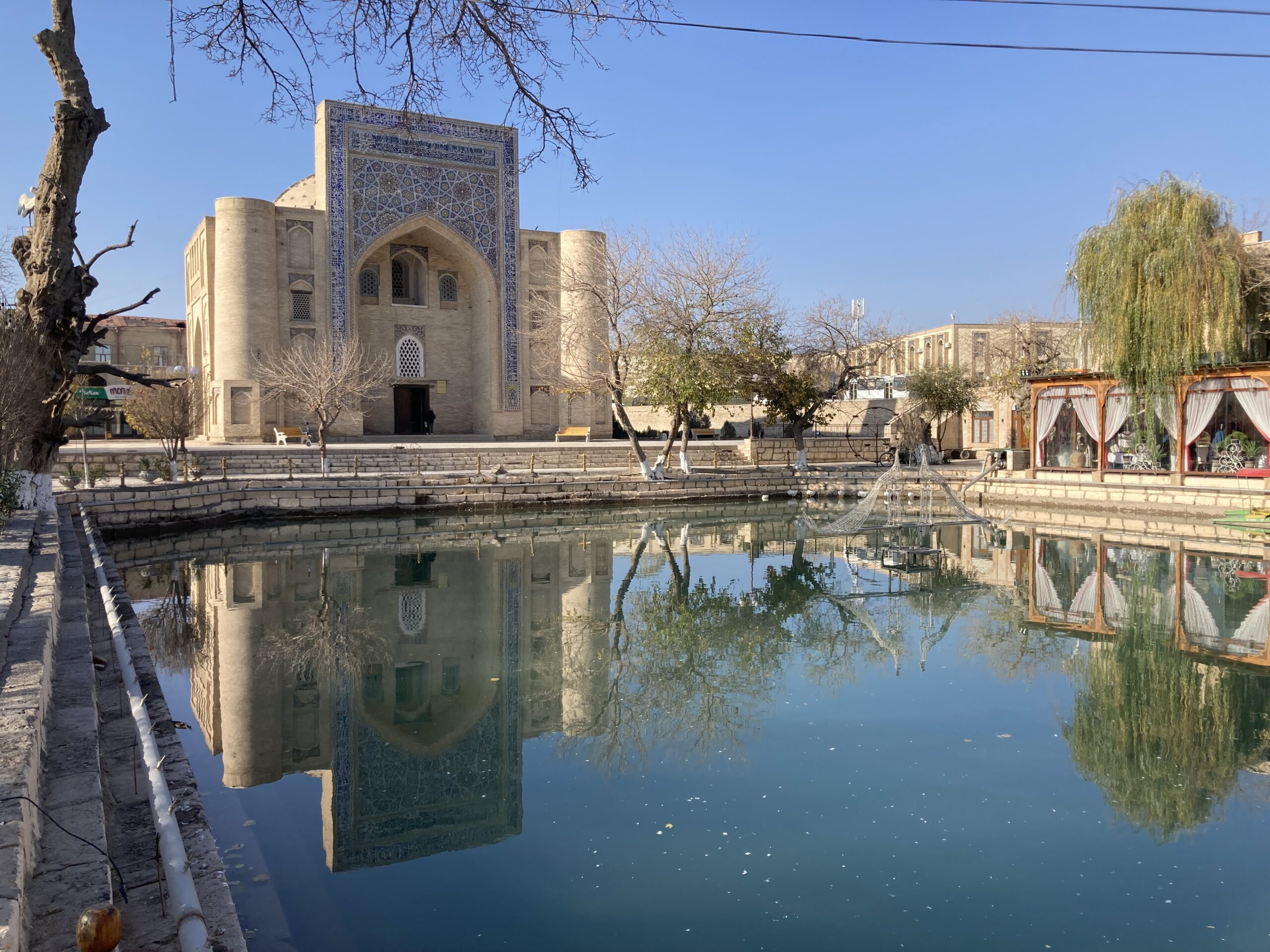
On the exact opposite side, one can find the Nodir Devonbegi Tekke, though in between the two is the main attraction here, this central pond. Bukhara used to have a massive water canal system, which allowed the creation of artificial ponds like this one around the town, despite it essentially being an oasis, devoid of much water. It seems like only this one was somewhat maintained during December, which is only expected as it is the low season. You can have some meals here, though the quality is questionable, and the prices are not cheap for Uzbek standards.
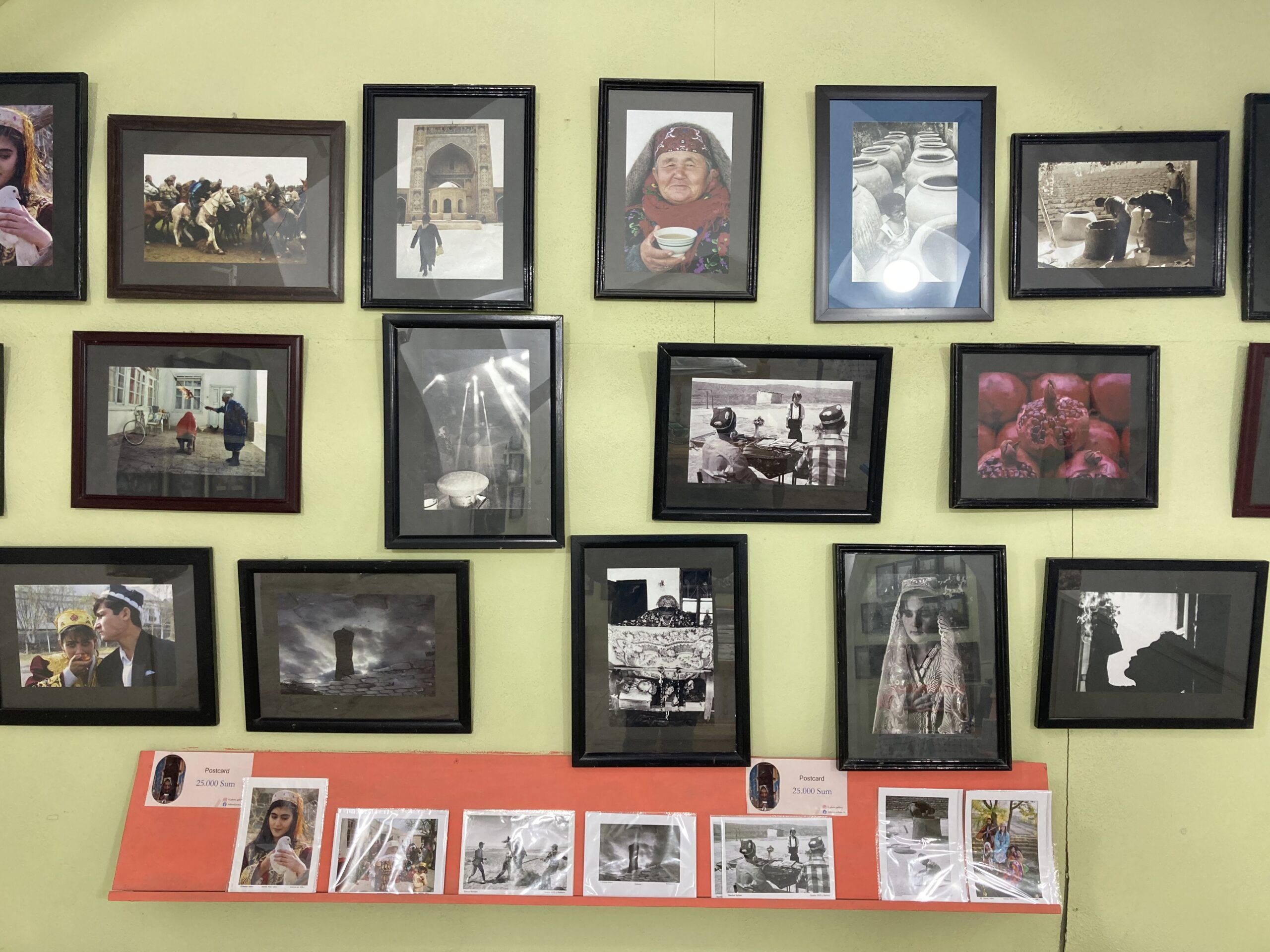
Fuelled up and ready to explore more of this magical town, I made my way back to the aforementioned photo gallery. This time, it was open! The owner was extremely kind and allowed me to take a look around and take some photos freely. You can, of course, buy these photographs taken by him and his late brother for a small fee. I am not that much into photography, I can barely not forget to take some of these as I travel, so I did not, but regardless of that, you can enjoy Bukhara through the lens of its two local artists here, which is a superb opportunity.
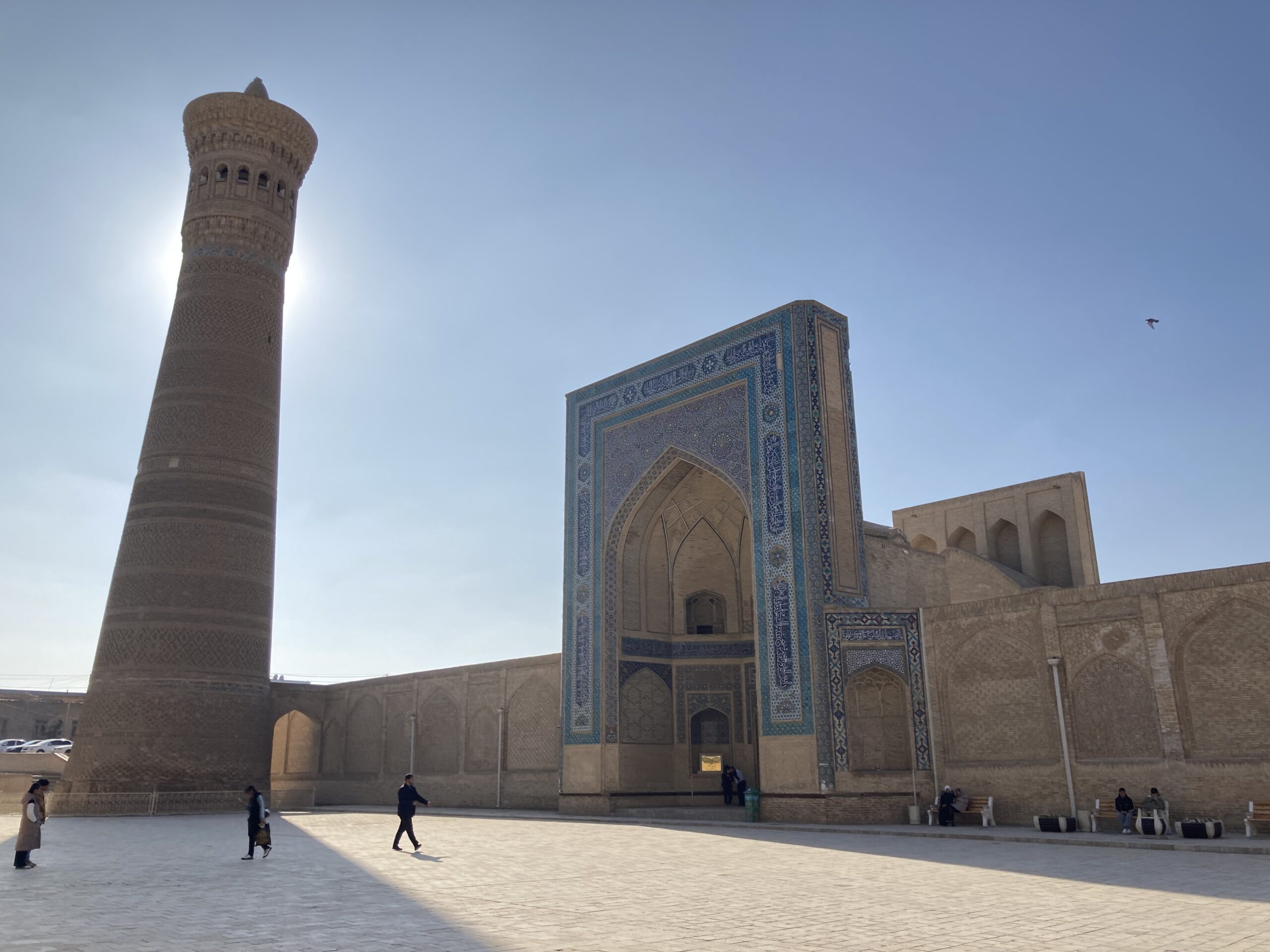
After realizing that I forgot to take a decent photo of the Kalon Minaret, arguably one of the most renowned things to see in Bukhara, I went back there to fail at taking a decent photo of it, once again. This square is normally filled to the brim with tourists at any other point in the year, you can check YouTube and the like to see it for yourself. I guess there are positives to walking around Bukhara when it is below freezing for the most part of the day…
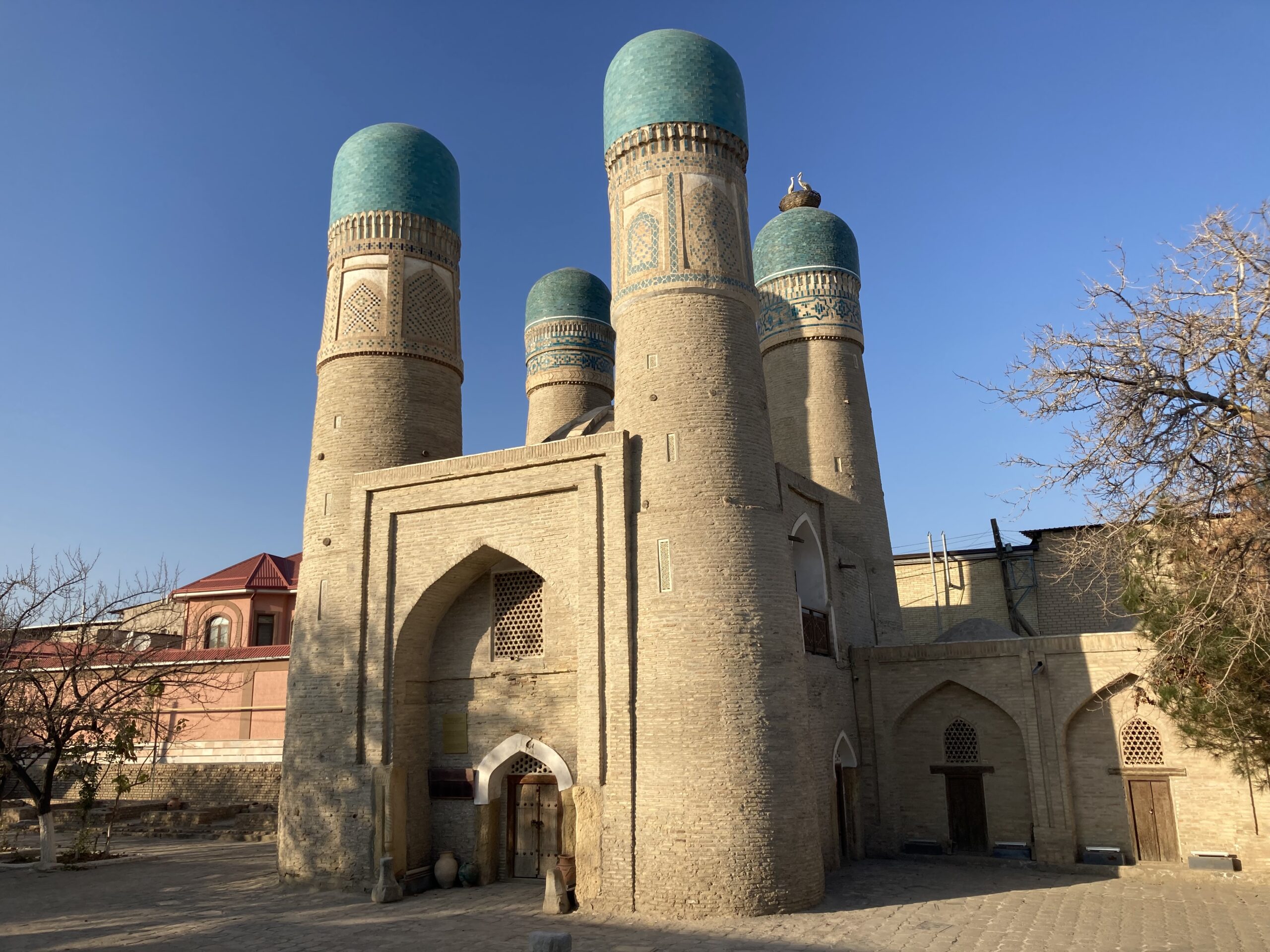
Sad with how the sun ruined my photo of the Kalon minaret, I decided to check the small but beautiful Chor Minor Madrasah before heading back to my hotel for some rest. Its four tiny minaret looking domes are just so adorable, but due to it being December, there was no one around and thus no way to enter it.
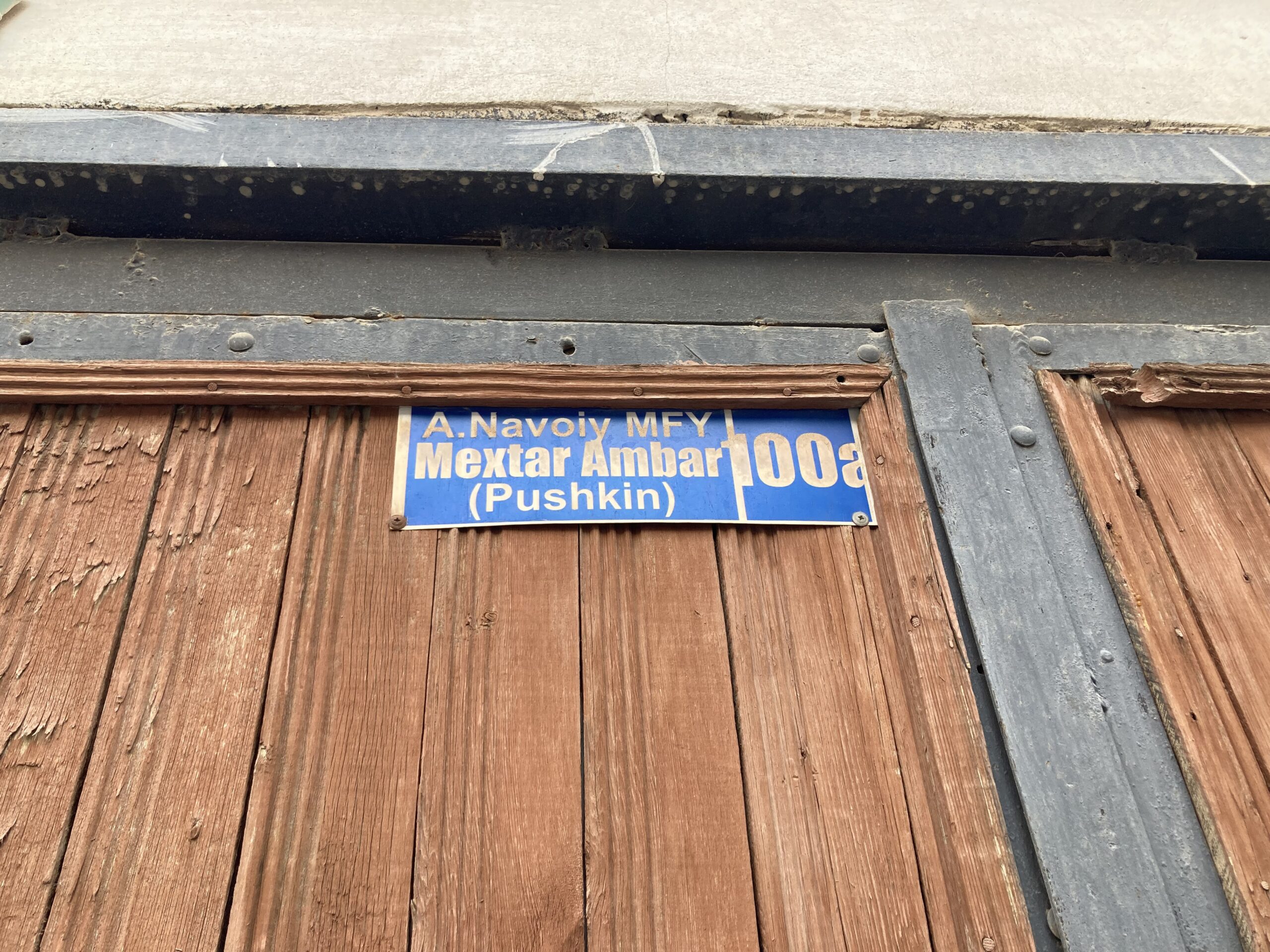
On my way back to my room, I realized that there was something interesting going on with the street names in Bukhara. Much like the issue with some doors having numerous numbers associated with them, some streets have multiple names here. I suppose there were some changes to the way streets were named and addresses were handled at some point, as I can see why an ex-USSR country may want to do away with Pushkin in their street names…
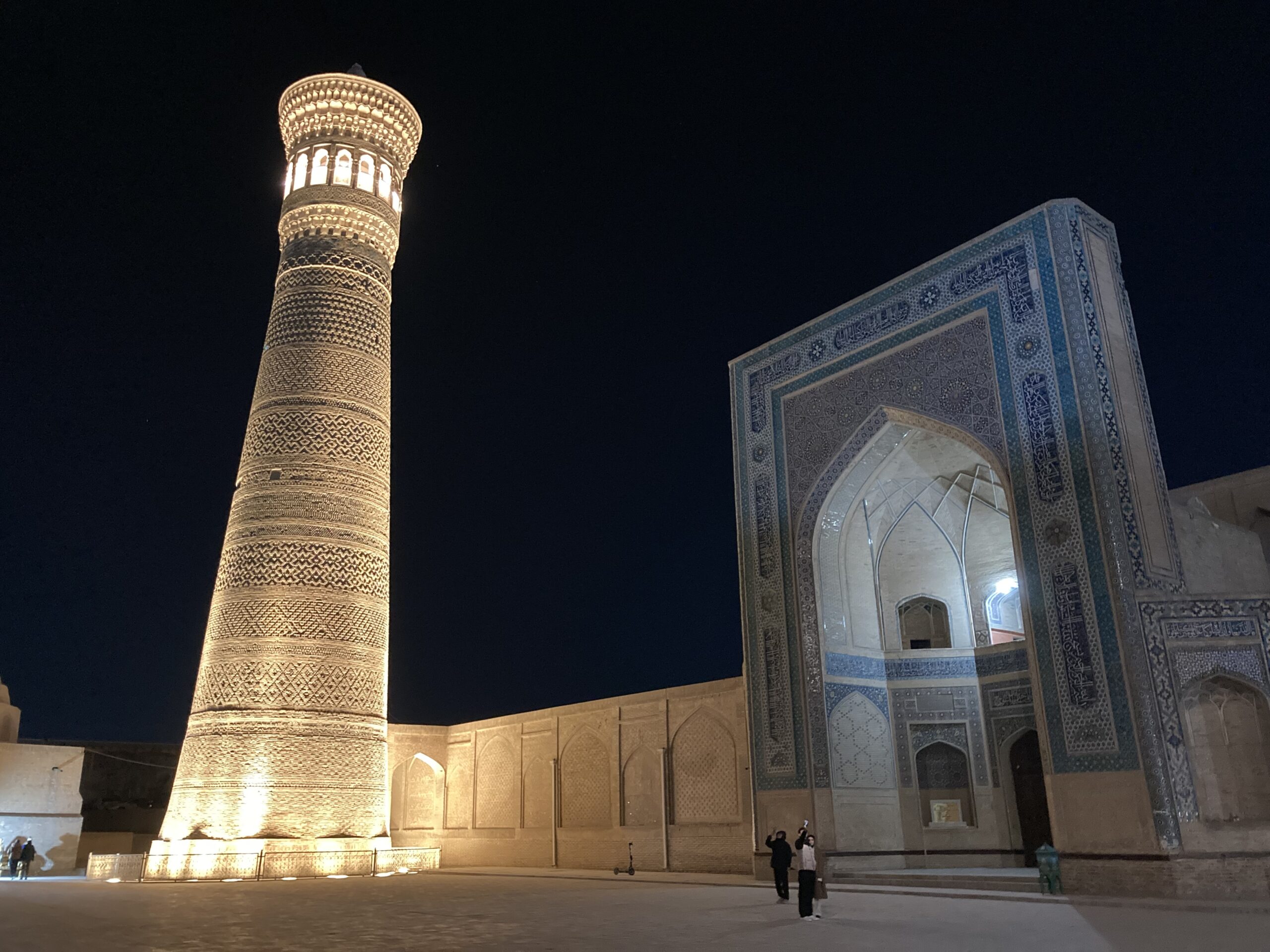
After getting some rest, I wanted to enjoy the only night I had in Bukhara by basically visiting everything I saw so far, but at night. As I imagined, it all looked even more magical, and with less people!
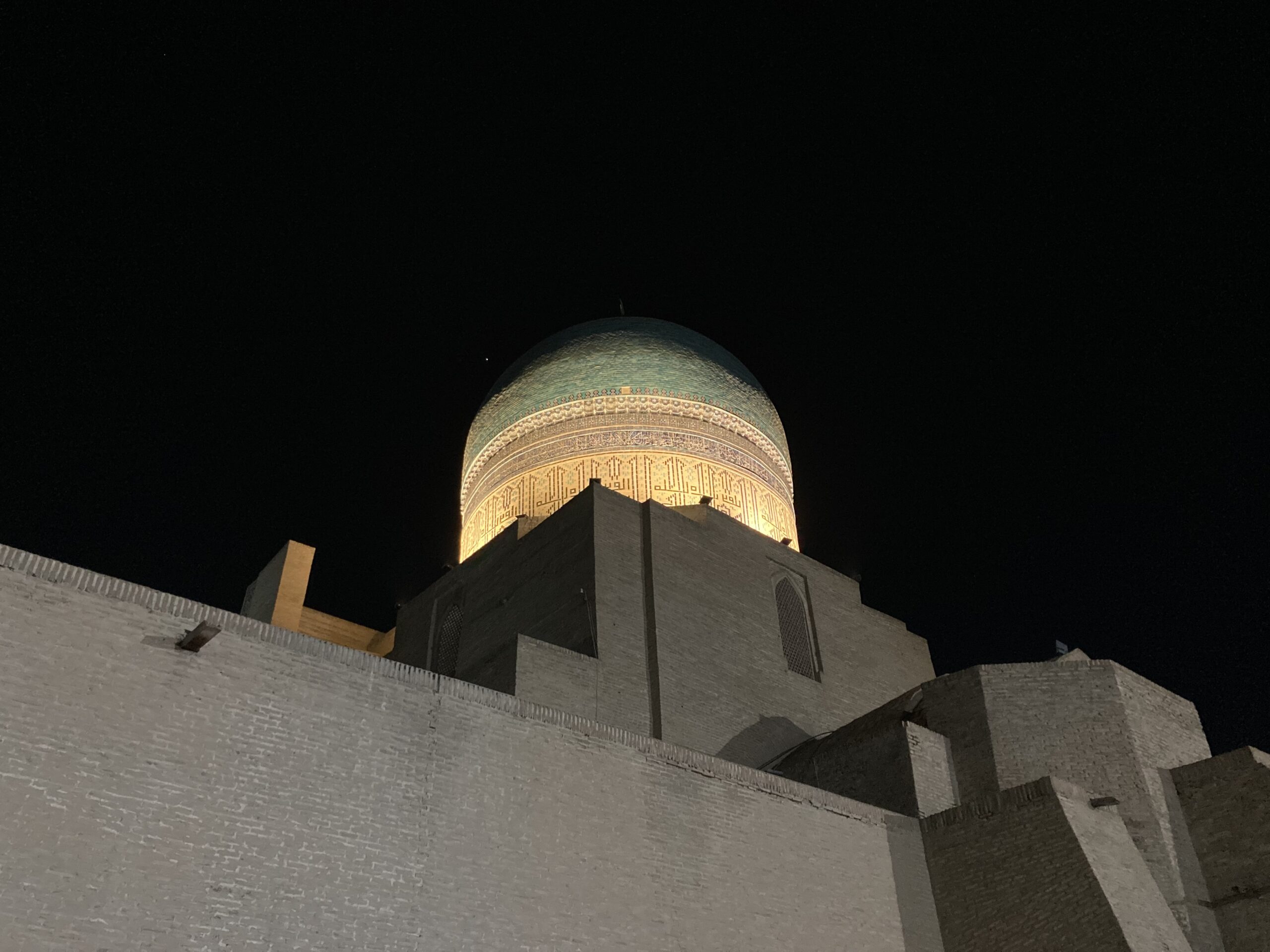
My phone could not do much justice to the photos I wanted to take so I will not bother you with too many failed attempts at capturing the essence of a late-night walk around Bukhara, so here goes the last one.
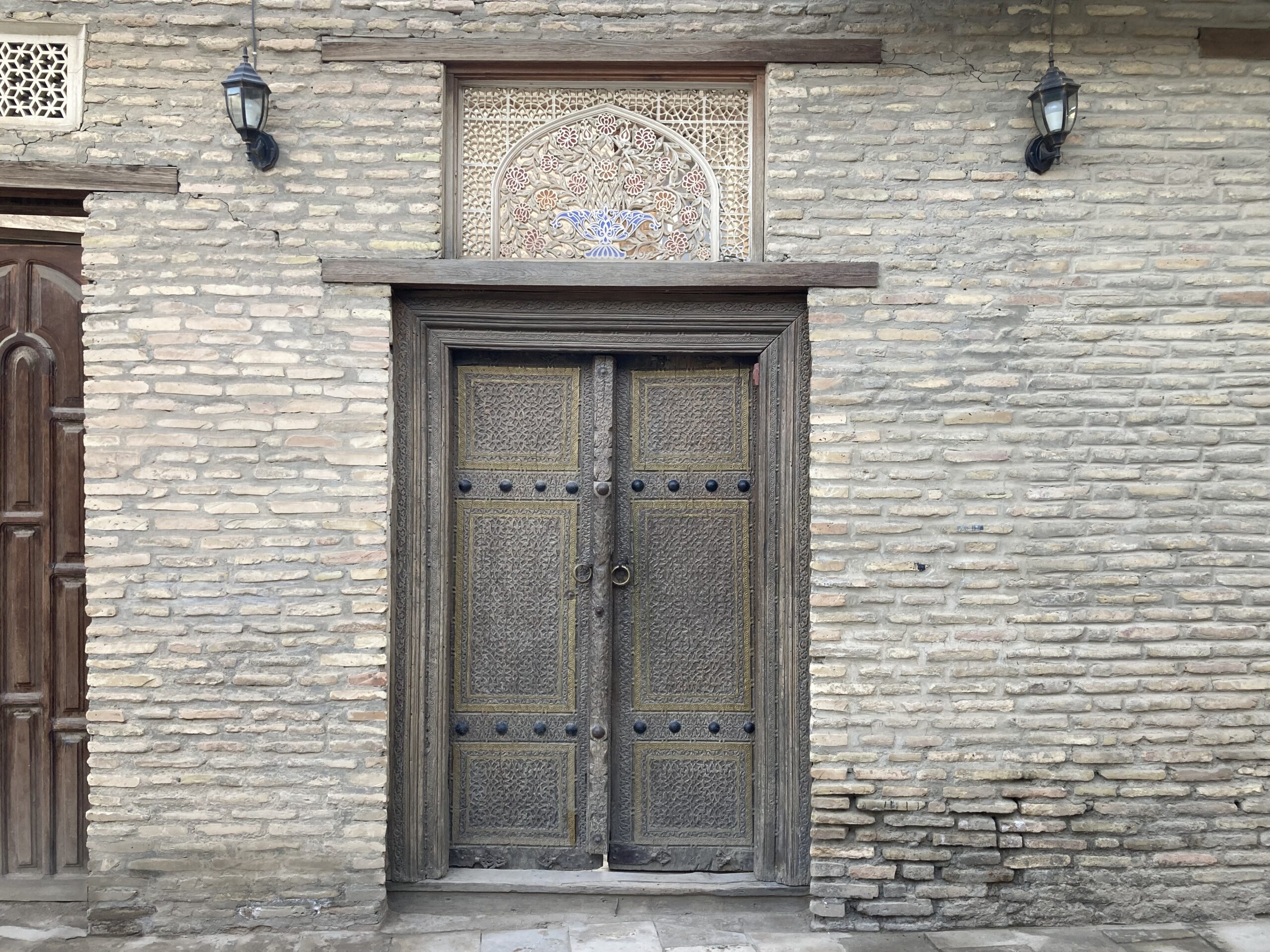
In the morning, I woke up early to see a few more almost hidden streets around town, and to say goodbye to the pond in the middle. I was greeted by even more beautiful doors like this one, and many others, but it is enough about the doors.
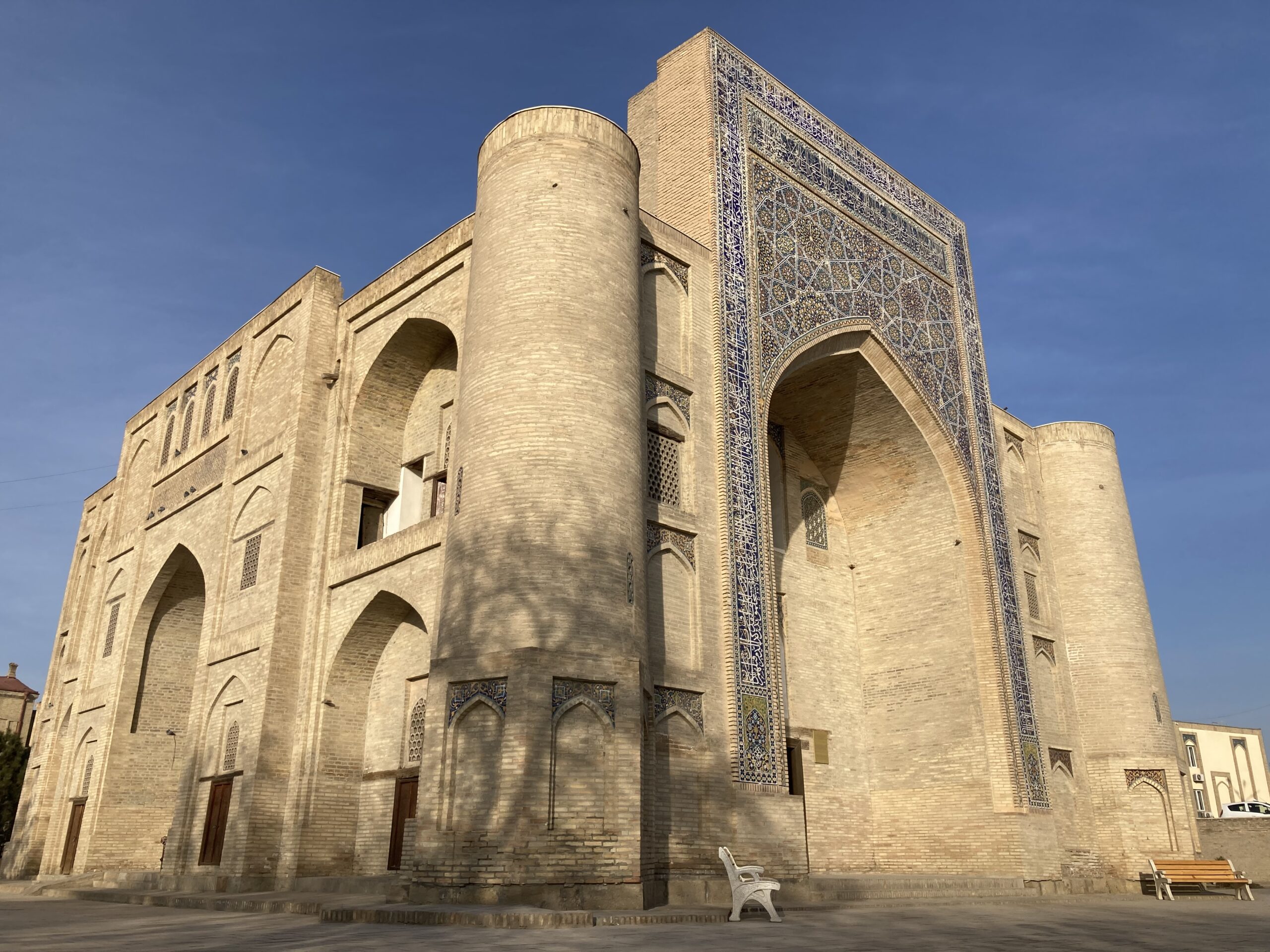
I also managed to take a much better photo of the Nodir Devonbegi Tekke from a different angle, I just cannot wrap my head around these things to be honest. They look like buildings out of actual historical strategy games, all self-standing and super characteristic, but they are here, right in front of my eyes…
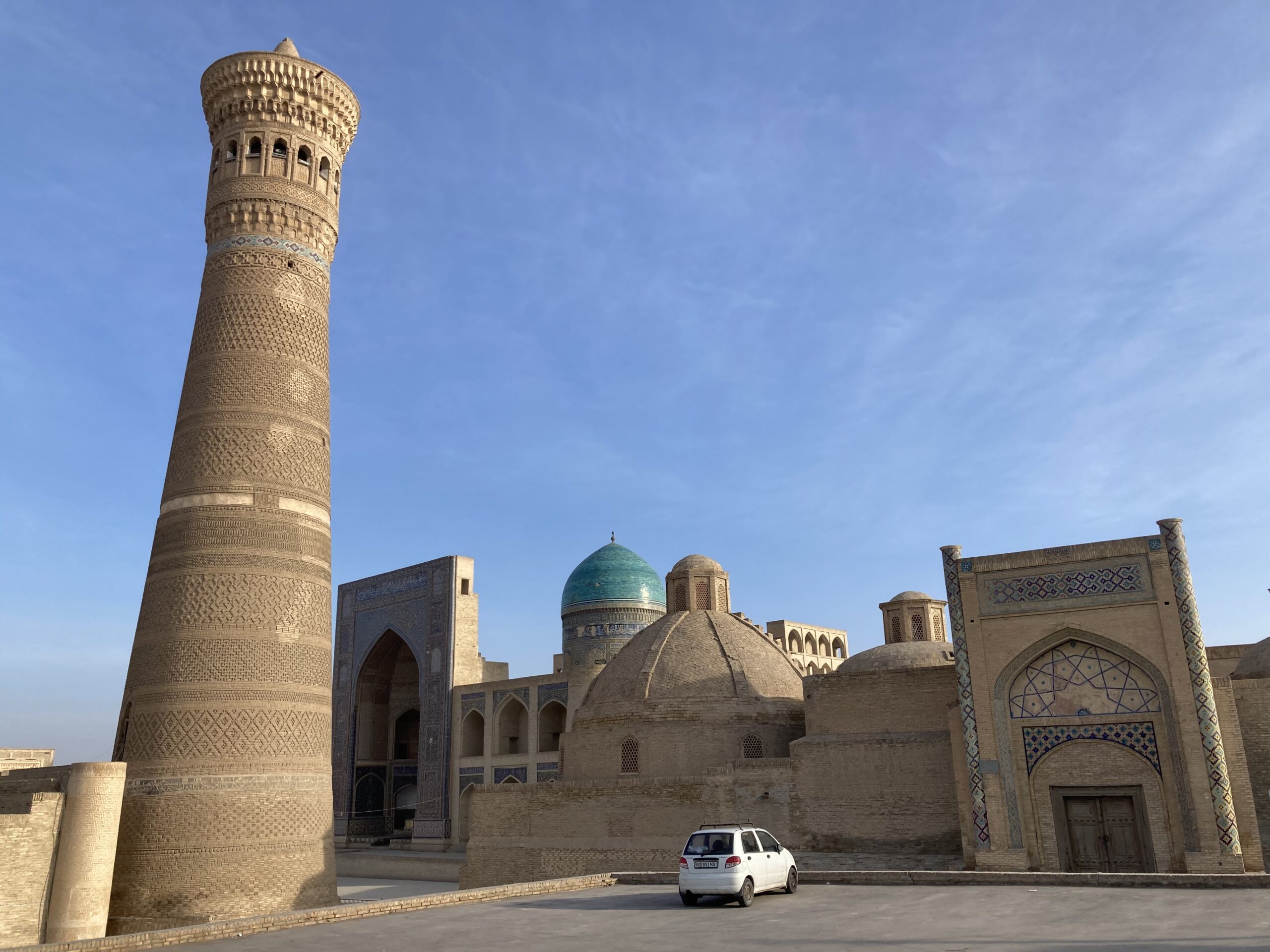
After talking to a nearby construction worker who realized that I was a Turk, and wanted to converse a bit in Turkish, I was told about one of the best spots to take a photo of Kalon Minaret. The guy knew his stuff, this time, the sun could not destroy my photo! It was not perfect, though I was offered to go up the ladder to take a photo from above the roof of a nearby house for a better shot, but I kindly declined the offer due to my limited time. I had to grab a coffee and a cake at the nearby Wishbone Café, and then make my way to the train station to catch a ride to Samarkand!
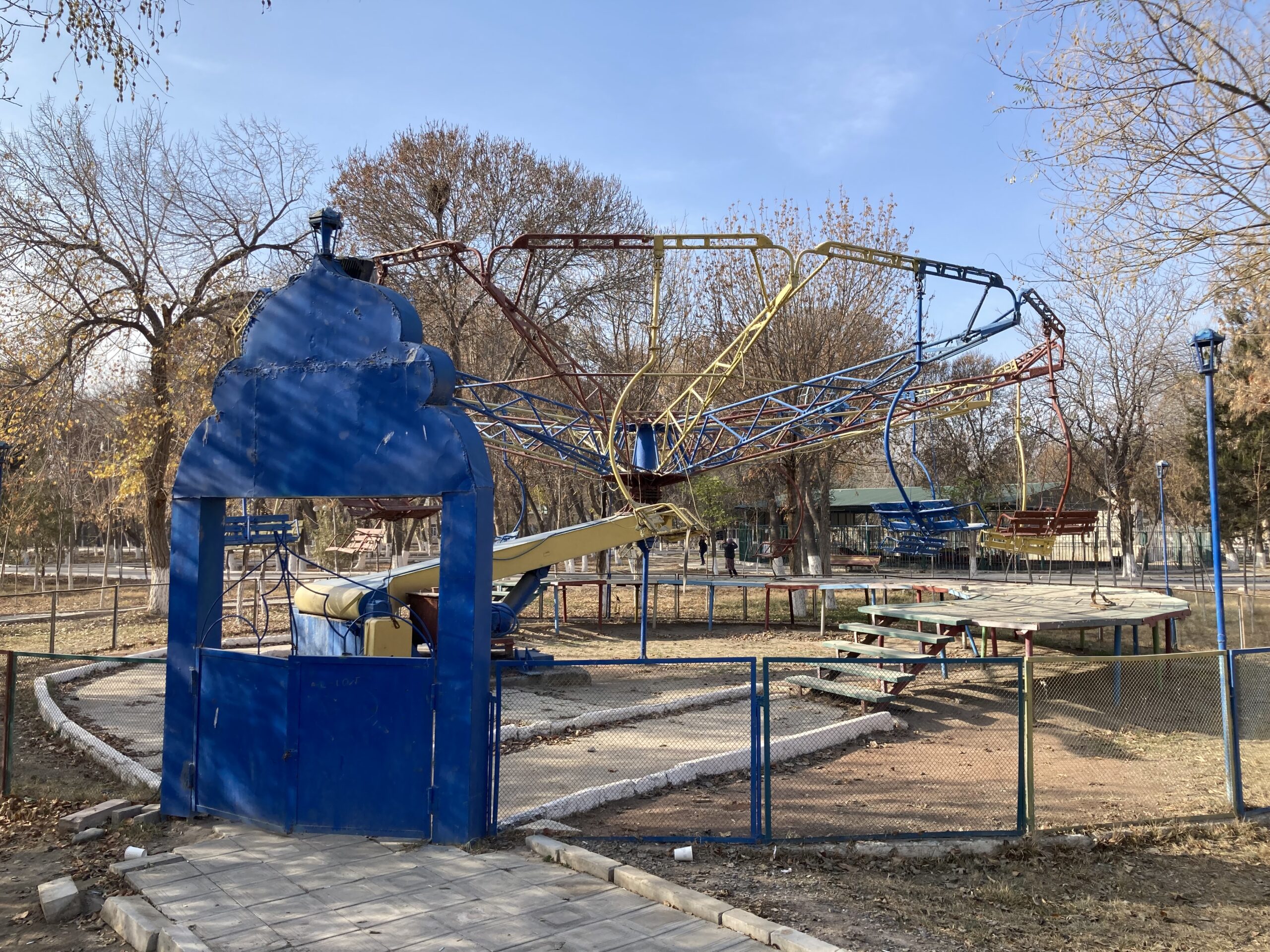
As I waited for my train to arrive at the station, all I could think about was still Bukhara, and how I should have extended my stay here from two to three nights. Though I have seen almost all it offered, just seeing it all again would have been such a joy. I also realized just how the rest of the city, those that were not lucky enough to be in its historic center, was lacking in infrastructure, and funding to keep what it has intact. A small amusement park of sorts near the train station looked all but deserted, which was quite sad to say the least. Determined to eventually make my way back here (a rarity in my travels), I got aboard the high speed train to Samarkand, where I hoped I could find some solace in other amazing treasures from the past.
If you wish to find out what to eat during your stay in Bukhara, feel free to check out this piece of mine!
